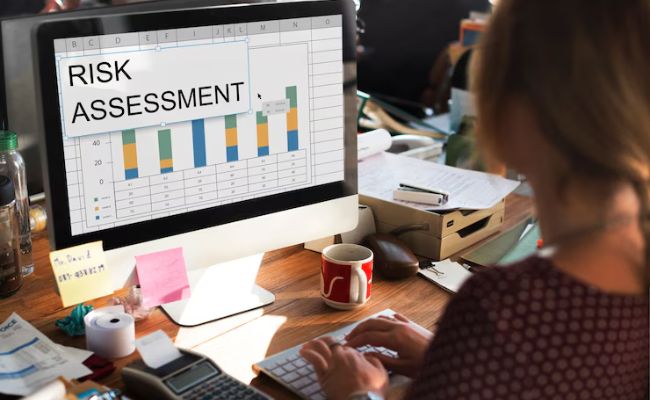Introduction
Risk management begins with one of its most vital components—risk identification. Before a business can manage or mitigate threats, it must first recognize and understand them. Risk identification is foundational to proactive decision-making, enhanced safety, and organizational resilience.
This article explores key risk identification techniques that every professional should be familiar with, along with their applications, advantages, and limitations.
Why Identifying Risk Matters
Identifying risks early enables an organization to prepare for potential disruptions and avoid crisis mode. Poor risk identification can lead to surprises, financial losses, reputational damage, or regulatory penalties.
Benefits include:
- Enhancing foresight in planning
- Improving resource allocation
- Supporting insurance and compliance
- Reducing response time in emergencies
In short, the better you identify risks, the more control you have over your organization’s future.
Categories of Risk to Consider
Before diving into techniques, it’s important to understand the broad categories where risks might emerge:
- Strategic Risks – Poor business planning or failed innovation
- Financial Risks – Currency volatility, bad debts, investment losses
- Operational Risks – Process failure, system outages, human error
- Compliance Risks – Legal penalties, policy violations
- Reputational Risks – Customer dissatisfaction, media backlash
- Environmental/Social Risks – Climate events, labor unrest
Effective risk identification means covering all these dimensions.
1. Brainstorming
What it is: A group technique where stakeholders generate ideas to surface potential risks.
How it works:
- Gather a diverse team
- Set ground rules for open thinking
- Use prompts (scenarios, categories) to fuel discussion
Pros:
- Easy to implement
- Encourages team engagement
- Works well early in projects
Cons:
- May miss critical risks without structure
- Dominant voices can skew results
2. SWOT Analysis
What it is: Evaluating internal Strengths and Weaknesses against external Opportunities and Threats.
How it works:
- Chart a 2×2 matrix
- Identify internal capabilities and vulnerabilities
- Assess external influences like market shifts or regulations
Pros:
- Useful for strategic planning
- Helps align risk with opportunity
Cons:
- High-level; may lack depth
- Requires good facilitator
3. Checklists
What it is: A structured list of known or common risks used to prompt discussion or review.
How it works:
- Use industry-based or organization-specific checklists
- Review systematically during planning
Pros:
- Simple and comprehensive
- Reduces chance of oversight
Cons:
- Limited to known risks
- May not encourage new thinking
4. Interviews and Expert Judgment
What it is: Speaking directly with experienced individuals to uncover specialized risks.
How it works:
- Conduct structured or informal interviews
- Use open-ended questions to prompt insights
Pros:
- Draws from deep experience
- Captures hidden risks
Cons:
- Time-intensive
- May be biased based on personal perspective
5. Delphi Technique
What it is: A series of surveys distributed to experts in multiple rounds to converge on risks.
How it works:
- Anonymously gather input
- Share results after each round
- Continue until consensus is reached
Pros:
- Balances opinions
- Removes influence of groupthink
Cons:
- Takes time
- Requires coordination
6. Cause-and-Effect (Fishbone) Diagrams
What it is: A visual tool that identifies potential causes of a risk event.
How it works:
- Draw a central spine with branches for categories like Methods, Machines, Materials, etc.
- Add sub-causes under each
Pros:
- Useful for root cause analysis
- Encourages structured thinking
Cons:
- May oversimplify complex risks
7. Process Mapping
What it is: Mapping business processes to identify potential failure points.
How it works:
- Diagram workflow steps
- Identify where delays, errors, or conflicts may arise
Pros:
- Visual and process-specific
- Great for operational risk
Cons:
- Time-consuming for complex processes
8. Historical Data and Lessons Learned
What it is: Analyzing past incidents, audit results, or case studies.
How it works:
- Review incident logs
- Study industry events or organizational history
Pros:
- Grounded in real experience
- Easy to access within mature companies
Cons:
- Only reflects past, not emerging, risks
9. Risk Workshops
What it is: Facilitated sessions that combine multiple identification methods.
How it works:
- Use brainstorming, SWOT, fishbone, and interviews together
- Engage cross-functional teams
Pros:
- Highly collaborative
- Generates broad insights
Cons:
- Needs skilled facilitation
- May need multiple sessions
10. Scenario Analysis
What it is: Creating hypothetical events and exploring their impact.
How it works:
- Design “what if” scenarios
- Map out triggers, consequences, responses
Pros:
- Great for strategic and black-swan risks
- Encourages future thinking
Cons:
- Time-intensive
- Needs strong imagination and data modeling
Putting It All Together
A mature organization blends these techniques based on:
- Project complexity
- Industry type
- Risk appetite
- Available resources
The best strategy is layered—combining quick wins like checklists with deeper dives like workshops and interviews.
Explore Best Online Courses to Learn Risk Management
If you’re new to risk management or looking to deepen your expertise, there’s no better time to start than now. Learning from industry experts can help you build a strong foundation and gain certifications that set you apart in the job market.
At www.smartonlinecourse.com, in collaboration with the Risk Management Association of India (www.rmaindia.org), you can explore a range of self-paced, affordable online courses designed for both beginners and professionals. These courses are tailored to real-world needs, taught by experts, and designed for flexible learning.
Visit www.smartonlinecourse.com to explore more!
Email: info@smartonlinecourse.org
Conclusion
Risk identification is the starting point of all effective risk management. Professionals who master these techniques equip their organizations to face the future with greater confidence, agility, and success.


